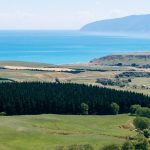Granny flats and papakāinga rules are changing
On 29 May, the Government released and opened up consultation on the largest change to national direction under the Resource Management Act 1991 (“RMA”) in New Zealand’s history. The changes proposed are significant, with four new national direction instruments proposed and amendments to 12 existing instruments.
This suite of changes is in addition to the replacement of the RMA signalled for 2026 with the new legislation premised on property rights and with the changes to national direction “developed with the new system in mind”. The proposed changes have been categorised into four packages:
Package 1: Infrastructure and Development
Package 2: Primary Sector
Package 3: Freshwater
Package 4: Going for Housing Growth
As part of Package 1, the Government has proposed two new National Environmental Standards to provide a more permissible regime for granny flats and limited scale papakāinga developments.
Granny flats
New Zealand currently has some of the least affordable housing in the world and according to Statistics New Zealand census data, an under-supply of one-to-two bedroom homes for smaller households. Demand for one-to-two bedroom houses is signalled to increase in the future due to demographic changes such as more single parent households, families having fewer children and an ageing population.

The proposed National Environmental Standards for Granny Flats (“NES-GF”) would put in place the long-signalled permissive regime to enable to development of granny flats. Referred to as minor residential units (“MRU”), granny flats with a maximum 70sqm internal floor area are proposed to be a permitted activity – meaning no resource consent is required – in residential, rural, mixed-use and Māori purpose zones where permitted activity standards are met. To qualify as an MRU, the granny flats must be detached, self-contained and single-storey.
The proposed NES clarifies that District Plan standards may be more enabling than the proposed NES provisions and includes a list of matters relating to MRUs that councils cannot set rules for, namely:
· Individual outdoor space;
· Glazing, privacy and sunlight access;
· Parking and access.
The NES-GF complements the proposed exemption to the Building Act 2004 to provide a building consent exemption to enable granny flats (referred to as small standalone dwellings) to be built without a building consent (under the Building and Construction (Small Stand-alone Dwellings) Amendment Bill). Submissions on this bill are open until 23 June 2025 with the Government indicating it expects the building consent exemption to be in force by early 2026.
Papakāinga development
The proposed National Environmental Standards for Papakāinga (NES-P) will provide a nationally consistent framework enabling limited scale papakāinga developments. The proposal permits papakāinga development up to 10 homes on specified land types within rural zones, residential zones and Māori purpose zones. The proposed land types include Māori freehold land, Māori customary land, Māori reservations and reserves, former land that was compulsorily converted under the Māori Affairs Amendment Act 1967 and returned land that was taken for public works. The NES-P will also permit particular ancillary activities associated with papakāinga including commercial activities (up to 100 square metres), conservation activities, visitor accommodation up to 8 guests, education and health facilities, sport/recreation activities, mara, urupā and māra kai.

Te Puna Wai papakāinga. Image sourced from Home in Place
Under the proposal, district plan rules and standards can be more lenient than the NES-P, enabling councils to work with mana whenua to develop bespoke papakāinga provisions or to retain existing, more enabling rules. This includes the South Taranaki District Council which in late May 2025 approved Plan Change 3: Papakāinga Development to the Operative South Taranaki District Plan (PC3) to enable papakāinga development within the district.1 The approved PC3 provisions enable papakāinga development on ancestral lands, regardless of land status, which is generally more enabling than the proposed provisions of NES-P.
The NES-P as proposed creates an interesting cross-section between the resource management framework and the Māori Land Court. Under this proposal, we expect to see more utilisation of Māori Land Court applications to convert land to a status that falls within the NES-P provisions to enable papakāinga development (unless councils take a similar and more enabling approach to land status similar to that of South Taranaki District Council).
Submissions on changes to National Direction
Consultation on Packages 1-3, including the proposals in relation to the NES-GF and NES-P closes on 27 July 2025. Consultation on Package 4 closes on 17 August 2025.
If you would like to understand how the proposals affect you or you wish to make a submission, please contact one of our Resource Management specialists.




